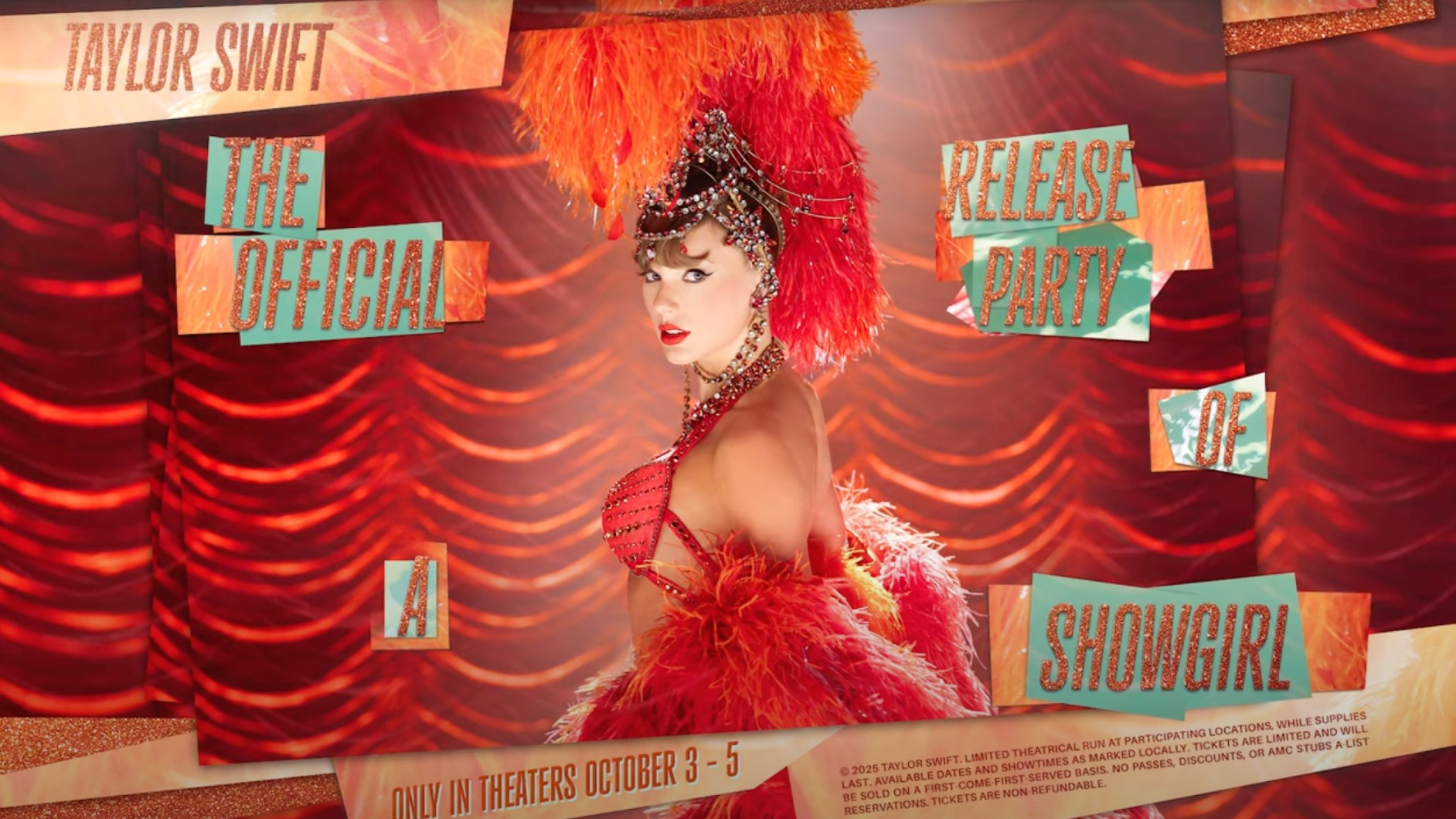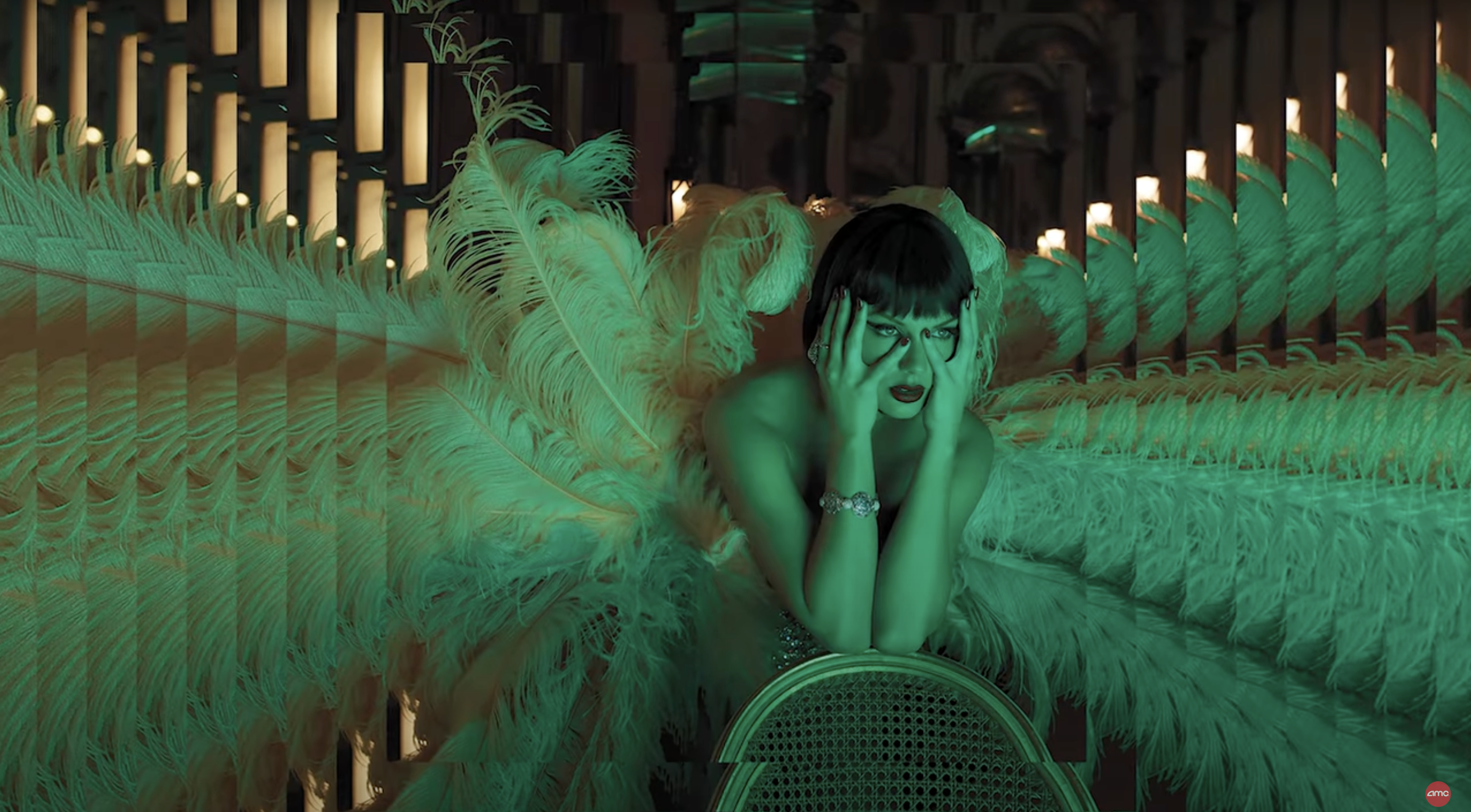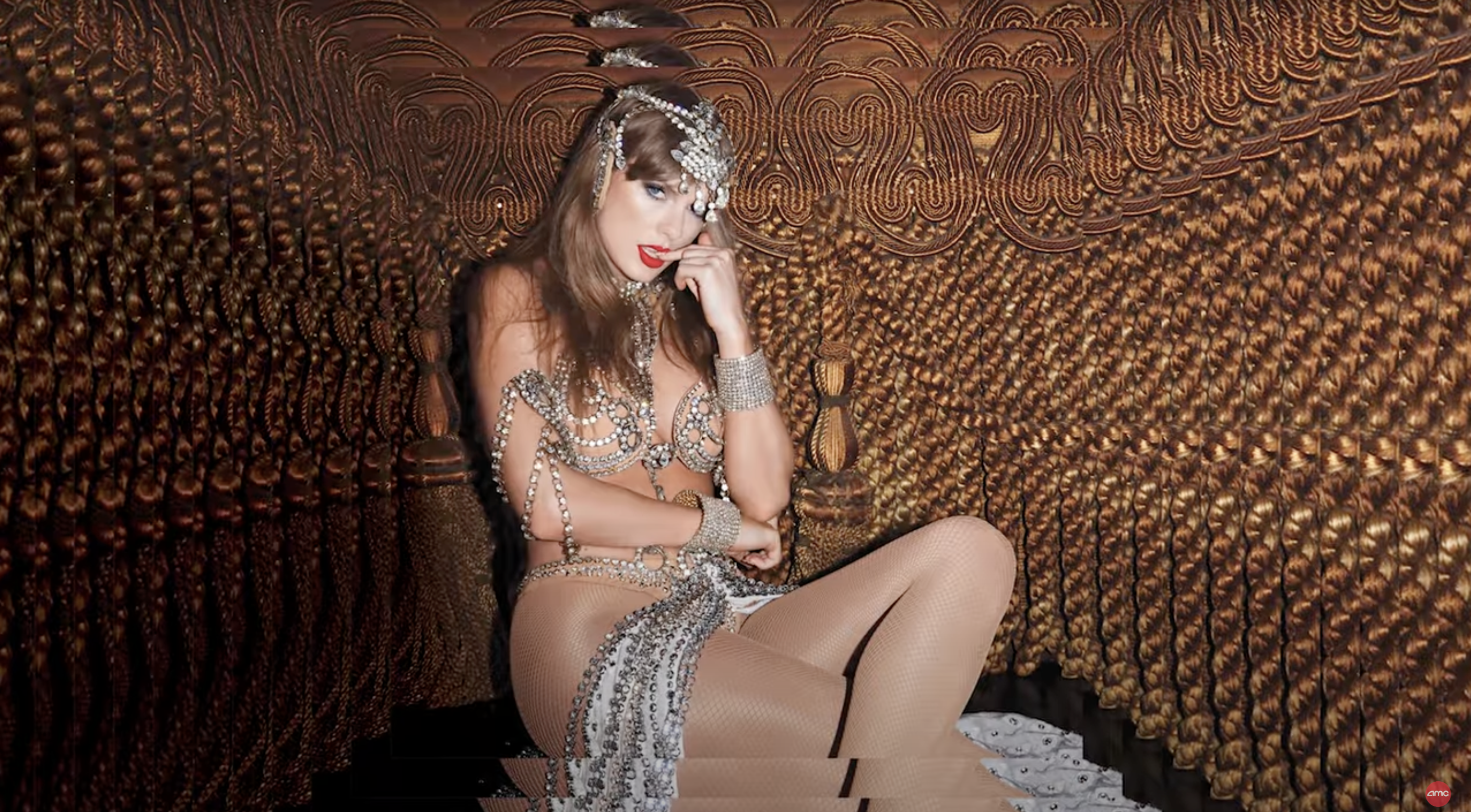The latest Taylor Swift movie is the future of cinema (and no, I'm not joking)
Forget superheroes: this is the kind of thing that saves the big screen experience from extinction.

Yesterday, I paid £12.12 to sit in a cinema and watch what was essentially a three minute 46 second music video, shown twice, interspersed with a bunch of DVD extras. And I couldn't be happier. In fact, the moment it finished, I felt an immediate compulsion to go see it all again. And although I suspect non-fans (the kind of people who think pop stars shouldn't release so many album covers) might have been bored, I truly think this is the future of cinema. So what am I on about? Well, let me start by sharing some background.
The arrival of joy
Taylor Swift dropped her 12th studio album, The Life of a Showgirl, on Friday. Her previous release, The Tortured Poets Department, had been an emotional purge: a stunned post-mortem of bitter break-ups, crying at the gym, and feeling pissed off about wasting her youth on a six-year relationship that fizzled out. But 18 months on, everything has changed.
Thanks to her relationship with NFL star Travis Kelce, with whom she's now engaged (an event that sent global brands wild), Showgirl radiates pure joy. Recorded in stolen moments during her record-shattering Eras tour, it's tight, triumphant, and clocks in at an economical 41 minutes. The release broke Spotify. Fans are ecstatic. And Taylor, it seems, is having the time of her life.
But what's especially brilliant about this release is how Swift transformed it into a global event. As I discussed in my article about her creative mischief, Taylor doesn't just drop albums; she turns them into interactive experiences. And at the centre of it all was a special cinema event titled: Taylor Swift: The Official Release Party of a Showgirl.
For three days only, fans around the world could experience an 89-minute "cinematic experience" featuring the world premiere of her self-directed music video for The Fate of Ophelia.
Now, let me be transparent: this wasn't the Eras Tour film. That was a spectacular, perfectly crafted concert movie that I would encourage everyone to watch, fan or not, for its epic scale, thrilling vitality and incredible production values. This was... something else entirely.

Much of the 89 minutes consisted of lyric videos – you know, the ones with animated text bouncing across the screen while the song plays. There was also a lot of behind-the-scenes content. which felt like DVD extras from a time when DVD extras were still a thing (young people: ask your parents). Overall, it felt more like a long YouTube video than a "proper movie". I'll be honest: I can imagine some casual viewers getting a bit bored by it.
Daily design news, reviews, how-tos and more, as picked by the editors.
But as a fan? I loved every single second. I sat there grinning like an idiot, soaking in every frame, every clever visual reference, every glimpse of the singer on set. The moment it finished, I wanted to watch the whole thing again immediately. It was like being invited backstage with Taylor and getting to rummage through all her props and notebooks.
And that's the magic of it, really. It wasn't trying to be a "proper movie". It was fan service in the best possible sense; a thank-you note to the people who'd been decoding those exit signs and debating the significance of orange.
Follow the money
But here's where it gets interesting. Showgirl earned $33 million domestically in its opening weekend, plus another $13 million internationally. That's $46 million globally for something that played for only three days.

Meanwhile, The Smashing Machine, starring Dwayne Johnson – one of the biggest movie stars on the planet – opened to a career-worst $6 million. This is a "proper film", directed by Benny Safdie, critically acclaimed, premiered at Venice, with The Rock giving what many are calling Oscar-worthy work. And it got absolutely flattened by what's essentially a glorified album trailer.
Here, then, is further evidence for an argument I made in this earlier article: that the future of the big-screen experience requires more than just reliance on big-budget movies.
We keep hearing that Hollywood needs to make better films, more original films, films with proper stars and proper directors. And yet here's Dwayne Johnson in a critically acclaimed, original drama, and nobody's turning up.
The problem is that audiences don't want to leave their homes for just any film. They want events. They want experiences. They want something they can't get by scrolling through Netflix in their pyjamas.
The real lesson
What Taylor understood – and what Hollywood keeps missing – is that the cinema experience needs to be more than just watching a film. It needs to feel special, unmissable, communal.
Fans weren't just buying tickets to watch music videos on a big screen. We were buying tickets to be part of something, to share the experience with fellow Swifties, to be there for the moment. Showgirl wasn't a slick, expensive production. It was small and intimate; made with love rather than a massive budget. But that authenticity is precisely what made it work.
This is the future of the big screen, whether the industry likes it or not. Not big-budget tentpoles hoping to justify their existence through sheer spectacle alone, but creative, engaging, fan-targeted events that give people a reason to leave their sofas. And if we want cinema to survive, we need to learn from it.

Tom May is an award-winning journalist and author specialising in design, photography and technology. His latest book, The 50th Greatest Designers, was released in June 2025. He's also author of the Amazon #1 bestseller Great TED Talks: Creativity, published by Pavilion Books, Tom was previously editor of Professional Photography magazine, associate editor at Creative Bloq, and deputy editor at net magazine.
You must confirm your public display name before commenting
Please logout and then login again, you will then be prompted to enter your display name.
